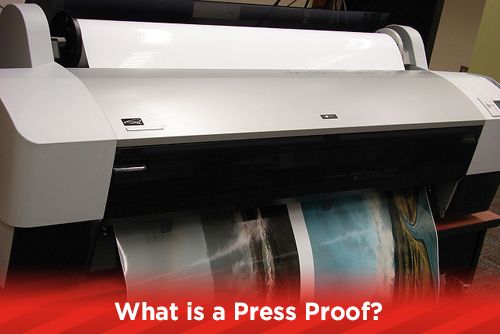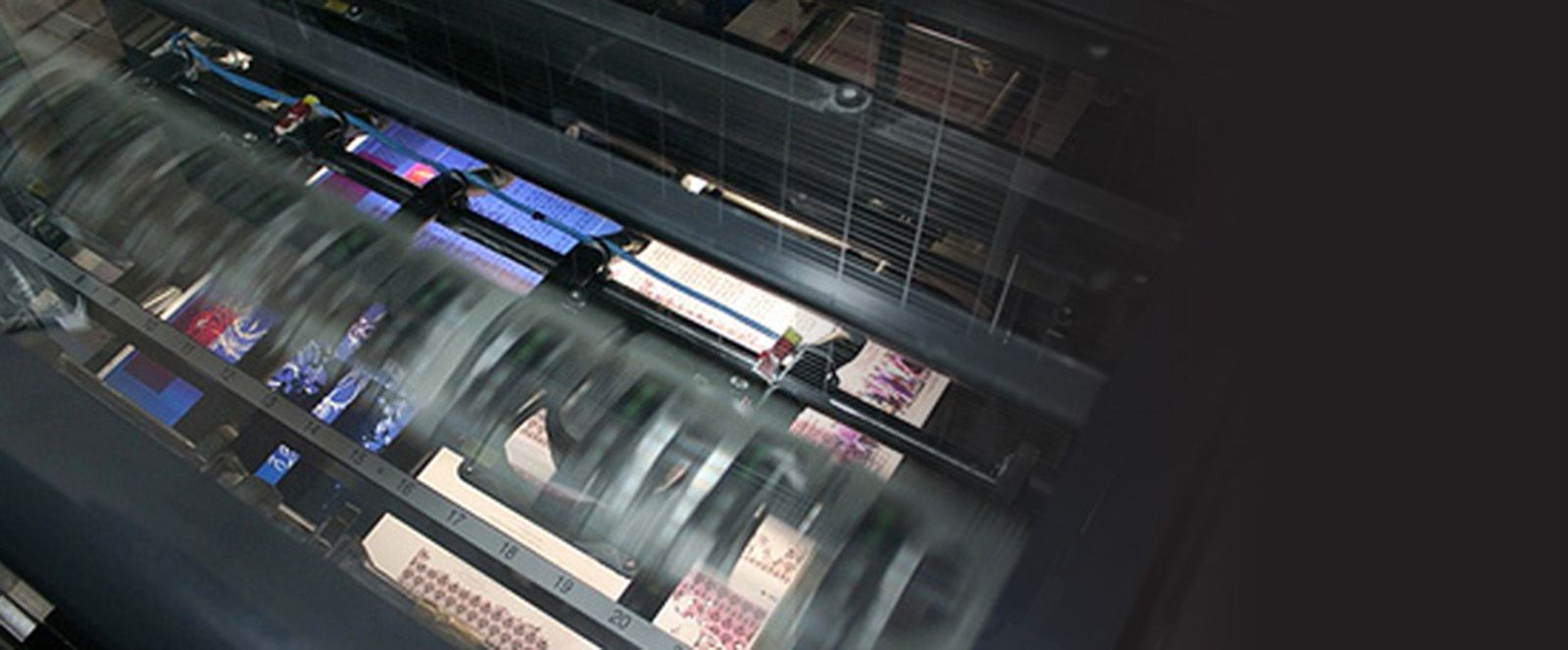
You’ve worked hard to make all of your graphic design pieces match. Your social media posts reflect the colors and style of your website. The free ebook you spent months on is bright and eye catching, but your printed flyers and mailers fall flat. What happened? How could you have caught this before thousands were printed and mailed? The answer is proofing. Join us as we take a look at what Printing Proofs are and how they can help you as a designer.
What Are Printing Proofs
When working at a printing company, you need a way to show the client a good representation of how their design will look once it is on paper. To do this, we produce proofs. There are a number of different proof options:
Desktop Proofs
This type of proof, printed using a desktop printer, is mainly used to create a mockup of the piece you are designing. Desktop proofs are used by the designer to double check copy and layout. Since this type of proof is moslty printed using a black and white laser printer or inkjet color printer, color should only be looked at to give you a general idea of the final piece. You should never expect an offset printing press or digital press to match a color laser or inkjet printout.
Desktop proofs are also great to send along with your digital files to your service provider. This will give them something to compare to when outputting your files. Using the desktop proofs, prepress technicians can see copy flow and make sure support files are updated properly.
PDF Proof
One of the quickest electronic proofs you can receive is a PDF proof. This proof is usually an electronic file that has been passed through the printing companies ripping software. Ripping software is used to transfer your digital file to a plate making machine. The advantage of a PDF proof is that it will show any problem areas interpreted by the ripping software. Lines around drop shadows, large black only graphics and text overprinting solid colors and trapping issues are most commonly seen on a PDF proof.
Color on a PDF proof should not be looked at as final color. The color on the PDF proof should be CMYK, but you are viewing it on an RGB color monitor. Because of this, your color could still look different on the final printed piece.
Digital Prepress Proof
For the closest representation of how your project will look once printed, a Digital Prepress Proof is a great option. Usually printed on a high end inkjet printer, the Digital Prepress Proof will show colors very close to their final outcome. The proof will also be trimmed out by the crop marks to its final size. If it is a multi-page book, a Digital Prepress Proof will allow you to check the pagination. Commonly, there are two different types of Digital Prepress Proofs, Blueline Proofs and Contract Proofs.
Blueline (or Dylux) Proofs
A Blueline or Dylux proof is named from the paper this proof use to be produced on. Before everything was DTP (direct to plate), proofers would take the film negatives used to burn plates and expose the film onto a light sensitive paper. This paper would turn blue when a high powered light was used to expose the paper.
Today, the term blueline or dylux proof is used for a color proof that is printed on uncoated sheets of paper. These sheets are usually printed on both sides and when folded down will give the client a proof that resembles the final printed piece. It is possible for a Blueline Proof to be output on the actual paper the job will print on, but usually it is printed on uncoated sheets of white paper.
Contract Proofs
If your print project is to be printed on a high end press like a Komori or Heidelberg, then a Contract Proof will be created. This proof is printed on a high gloss paper and is the closest proof to the actual print. Colors on the Contract Proof will match very closely, if not exactly, to the printed piece. When you receive a Contract Proof, you will be asked to provide your signature on the proof for approval. A press operator will use a Contract Proof to compare the color periodically as they print your job.
Be aware that the color of your Contract Proof may not resemble the color on the final print project if the color of the proofing paper is different than the paper the project is printed on. Colors printed on a high gloss paper will look brighter than those printed on an uncoated or natural colored paper.
Press Proofs
The most expensive proof to create is the Press Proof. This type of proof is generated by burning plates, inking up the press, and printing the actual job. If there are any corrections with this type of proof, then your job has to go back to prepress, update the file(s), re-rip and burn more plates, then load the plates back onto the press, making it very time consuming and expensive.
You should only use a Press Proof after you have received and checked a Blueline Proof and Contract Proof, and you have certain colors that are very critical. A good press operator can adjust certain colors on the press by adding or subtracting ink densities while the press is running.
Proofs and Pantone Colors
When you have a print job that includes Pantone Colors, the proof you receive may not be an exact color representation of the Pantone Color you selected. If you need more information about Pantone Colors, see our previous blog post “How Much Do You Know About Pantone Colors?”
Any kind of electronic proof will be generated on a printer that can not match every Pantone Color available, especially metallics, pastels and neon colors. Many proofing printers use more than CMYK inks, newer Epson printers are equipped with 10 and up to 12 inks, allowing proofs to achieve a wider range of colors that can closely match Pantone Colors. But the colors will still be off. Instead, the press operator will use their Pantone Matching System to check the color on the press. As long as you designate the correct PMS color you want, the final printed piece will match.
Which Proof Should I Ask For?
At the very least, you should receive a PDF proof for every job you send to a printing company. Using a PDF proof will show you how your digital file processed through the ripping software. If your job is a business card, envelope or letterhead, a Blueline Proof will be enough to show you a close color representation. A black and white multi-page book, either saddle stitched or perfect bound, would also benefit from a Blueline Proof. Being able to hold the proof in your hands at its final size and flip through the pages to check your page numbers and margins will bring to light any errors or areas that need adjustment. Any print media project that has photos or extensive color will need to have a Color Contract Proof generated. Not only will this proof show you how your colors will look, but it also serves as a target for the press operator.
What Should I Look for on the Proof?
With any and every proof you receive, always check your copy to make sure that your text wrap is the same. Check your color break on PMS colors, some proofs you will not see if you have a color designated coated and the same PMS color designated uncoated, but a good prepress operator will merge these two colors into one. Measure your proof to double check the final size. Proofs are hand cut, so your measurement may be slightly off, but if it is glaringly off, then you should find out why. Watch your drop shadows and trap lines. Certain ripping software can cause issues with drop shadows and opacity. If you see a white line that should not be there ask if it’s a trapping issue or why it is showing up.
When you receive a proof, treat it as if it was a final printed piece. Be thorough when you are looking over the proof. Read each line and check that you are using proper grammar. Understand that once you sign an approval on the proof, and it goes back to the print company, that your job will be printed. If you approve the proof and hours later you see a mistake, most likely you will have to reprint the entire job. Many print companies utilize spell check and their prepress and press operators can find errors, but ultimately it is the responsibility of the client to make sure your piece is print ready.
Stay up to date by subscribing to our mailing list.

